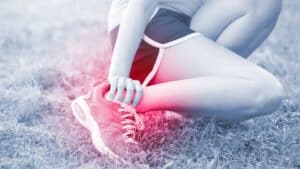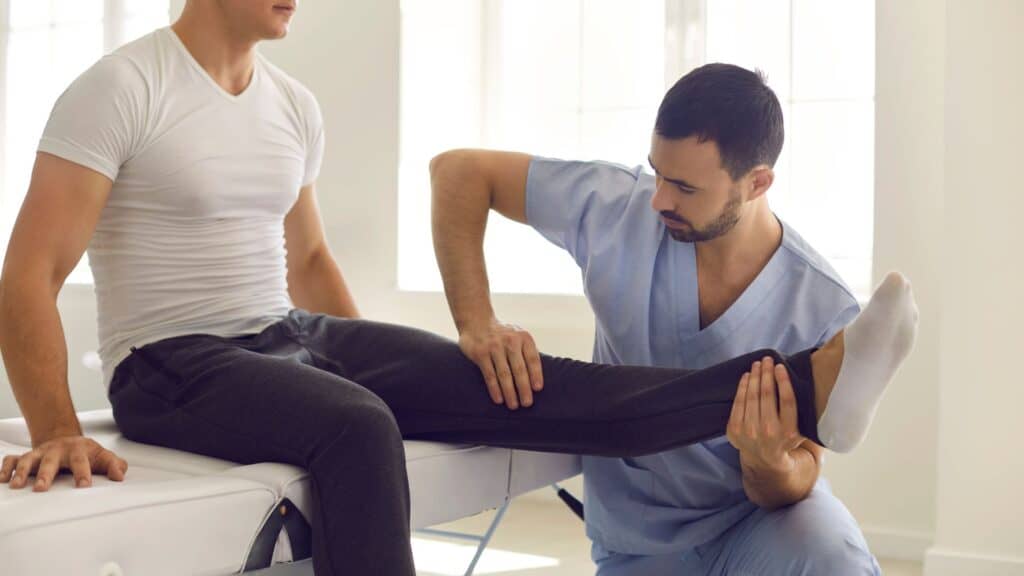In the vibrant coastal community of Encinitas, embracing holistic approaches to healthcare is not just a trend but a way of life. As the gentle waves of the Pacific Ocean inspire wellness and balance, integrating acupuncture into your functional medicine plan becomes an essential component of your journey towards optimal health. This ancient practice, rooted in Chinese medicine, offers a myriad of benefits, from alleviating pain and reducing inflammation to enhancing mental clarity and promoting overall well-being. In this progressive enclave, merging the wisdom of acupuncture with modern functional medicine approaches unlocks a pathway to holistic wellness tailored to the unique needs of each individual.
Understanding the Nature of Injuries: A Primer on Common Ailments

Injuries, whether acute or chronic, can significantly impact our lives, limiting mobility, causing pain, and affecting overall well-being. To navigate the complexities of rehabilitation effectively, it’s crucial to have a foundational understanding of common ailments. This primer aims to shed light on the nature of injuries, empowering individuals to recognize symptoms, seek appropriate treatment, and embark on the path to recovery.
Sprains and Strains
Sprains involve the stretching or tearing of ligaments, the fibrous tissues that connect bones to each other, commonly occurring in joints like ankles and wrists. Strains occur when muscles or tendons, which connect muscles to bones, are stretched or torn, often resulting from overexertion or sudden movements.
Fractures
Fractures, or broken bones, can range from hairline cracks to complete breaks. They occur when the force exerted on a bone is greater than its strength, often due to trauma or repetitive stress. Fractures are classified based on their severity and the displacement of bone fragments, with treatment ranging from immobilization to surgical intervention.
Tendonitis
Tendonitis is the inflammation or irritation of tendons, typically caused by overuse or repetitive movements. Common sites of tendonitis include the shoulders, elbows, knees, and wrists. Symptoms may include pain, swelling, and limited range of motion, with treatment focusing on rest, ice, physical therapy, and sometimes corticosteroid injections.
Bursitis
Bursitis involves inflammation of the bursae, small fluid-filled sacs that cushion and lubricate joints. Repetitive motions or prolonged pressure on a joint can lead to bursitis. Symptoms include pain, swelling, and tenderness around the affected joint, with treatment often involving rest, ice, anti-inflammatory medications, and physical therapy.
Overuse Injuries
Overuse injuries result from repetitive stress on muscles, tendons, and bones without adequate rest or recovery time. They are common in athletes and individuals engaged in repetitive occupational activities.
The Healing Journey: Navigating Rehabilitation with Physical Therapy

Embarking on a rehabilitation journey can be daunting, filled with uncertainty and challenges. Whether recovering from an injury, surgery, or managing a chronic condition, physical therapy emerges as a guiding light, offering hope and tangible progress. This journey is not just about restoring physical function but also about reclaiming a sense of empowerment and vitality. Let’s explore the key points of this transformative process:
Assessment and Goal Setting
Every healing journey begins with a thorough assessment by a qualified physical therapist. They evaluate your condition, mobility, strength, and range of motion. Collaboratively, you and your therapist set realistic and achievable goals. These goals serve as beacons, guiding your progress and keeping you focused on the road ahead.
Personalized Treatment Plan
Physical therapy is not a one-size-fits-all approach. Your therapist designs a personalized treatment plan tailored to your specific needs, goals, and challenges.
This plan may encompass various techniques such as exercises, manual therapy, modalities like heat or ice, and education on body mechanics and injury prevention.
Building Strength and Mobility
Central to rehabilitation is the gradual rebuilding of strength and mobility. Through targeted exercises and therapeutic interventions, you work to regain functionality and independence. Your therapist provides guidance on proper form and technique, ensuring safe and effective workouts that promote healing and prevent further injury.
Pain Management and Symptom Relief
Pain and discomfort are common companions on the road to recovery. Your therapist employs strategies to manage pain, alleviate symptoms, and enhance your overall comfort. Techniques such as manual therapy, therapeutic exercises, and modalities like electrical stimulation or ultrasound may be utilized to reduce pain and inflammation.
Progress Monitoring and Adjustments
Rehabilitation is a dynamic process, with progress often occurring in incremental steps. Regular progress assessments allow you and your therapist to track your advancements and make necessary adjustments to your treatment.
Empowering Patients: Building Strength and Resilience Through Therapy
In the realm of rehabilitation, physical therapy stands as a beacon of empowerment, guiding patients toward strength, resilience, and renewed vitality. Through a holistic approach, physical therapists empower individuals to take control of their healing journey, fostering a sense of agency and confidence. Let’s delve into the key points of this transformative process:
- Collaborative Goal Setting: Physical therapy begins with a collaborative goal-setting process between the patient and therapist. Together, they identify realistic and achievable objectives that serve as guiding lights throughout the rehabilitation journey.
- Personalized Treatment Plans: Each patient receives a personalized treatment plan tailored to their unique needs, goals, and challenges. This individualized approach ensures that therapy addresses specific areas of concern while maximizing outcomes.
- Strength and Mobility Building: Rehabilitation focuses on rebuilding strength and mobility through targeted exercises and interventions. Patients engage in structured workouts designed to enhance functionality and promote independence in daily activities.
- Pain Management Strategies: Pain and discomfort are addressed through various pain management strategies, including manual therapy, therapeutic exercises, and modalities such as heat or ice. These techniques help alleviate symptoms and improve overall comfort.
- Ongoing Progress Monitoring: Regular progress assessments allow patients and therapists to track advancements and make necessary adjustments to the treatment plan. This dynamic process ensures that therapy remains tailored to the patient’s evolving needs.
In the journey toward recovery, physical therapy serves as a guiding force, empowering patients to overcome obstacles, build resilience, and embrace their fullest potential. By fostering collaboration, personalized care, and ongoing support, therapists enable individuals to reclaim control of their health and wellness, one step at a time.
Conclusion
Integrating acupuncture into your functional medicine plan at Active Med Integrative Health Center in Encinitas can offer a holistic approach to your well-being. By combining the principles of acupuncture with functional medicine and physical therapy, you can address root causes of health issues and promote optimal healing. Whether you’re seeking relief from pain, managing chronic conditions, or enhancing your overall wellness, our comprehensive approach prioritizes your unique needs. Take the first step towards a healthier, balanced life by contacting us at +18586734400. Your journey to wellness starts here.




